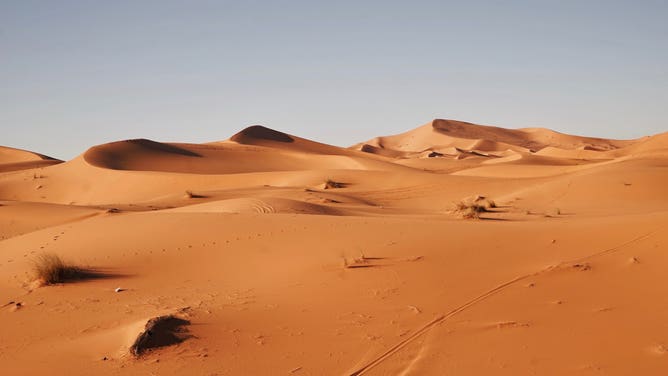5 things to know about the Saharan dust plume
These desert sands carried halfway around the world have benefits

Sand dunes in the Sahara Desert are seen on March 15, 2017.
(Andrzej Kryszpiniuk/Unsplash)
It’s a weather phenomenon that happens a few times each year — sands from the Sahara Desert are carried halfway around the world and deposited in the Western Hemisphere.
Here are five things you should know about the Saharan dust plume.
1. The cause
The Sahara Desert is a hot place. High temperatures can stay at more than 100 degrees for months at a time. All of that hot, dry air rises from the surface and carries with it fine particles of dust from the sands of the Sahara. That dust-laden air climbs to the highest reaches of the atmosphere, where winds called the Easterlies or Trade Winds (blowing from east to west) carry that dust about 3,000 miles across the Atlantic Ocean into the Western Hemisphere.
In the U.S., the plume usually affects locations along the Gulf Coast.
2. The amount of dust
According to NASA, about 182 million tons of dust leave Africa every year. That amount can vary depending on the amount of rainfall south of the Sahara region.
The plume is usually large enough that it can be tracked from space by orbited satellites.
3. The result
In places affected by the Saharan dust plume, skies will generally have a hazy or milky appearance. It all depends on how thick the plume is as it moves across the region.
You can also expect the color of sunsets to appear redder when the dust plume is present.
4. The air quality
Depending on the amount of dust being carried by the plume, air quality can be drastically affected. This means that people who have certain types of breathing problems can experience difficulty.
People in the path of the plume can also experience eye, nose and throat irritation because of the fine dust particles in the air, according to WebMD.
5. The benefits
One of the benefits of the Sahara dust plume is that it can help keep hurricane development in check, according to NASA.
"We think a dust storm has three main components that can suppress a hurricane," said Jason Dunion, a researcher who participated in the NASA African Monsoon Multidisciplinary Analyses (NAMMA) campaign. "One, it’s got super-dry air. Hurricanes don’t like dry air in the middle parts of the atmosphere, and that’s exactly what the Saharan Air Layer has. A Saharan dust storm also has a very strong surge of air embedded within it, called the mid-level easterly jet, that can rip a storm apart that’s trying to develop. We call that vertical wind shear. And then the third piece is all this dust."
Scientists at NASA also said the dust contains phosphorus, which is a necessity for plants.
"In the tropic region (of the Western Hemisphere), the phosphorous is quite limited," said Hongbin Yu, Ph.D., of NASA’s Goddard Space Flight Center.